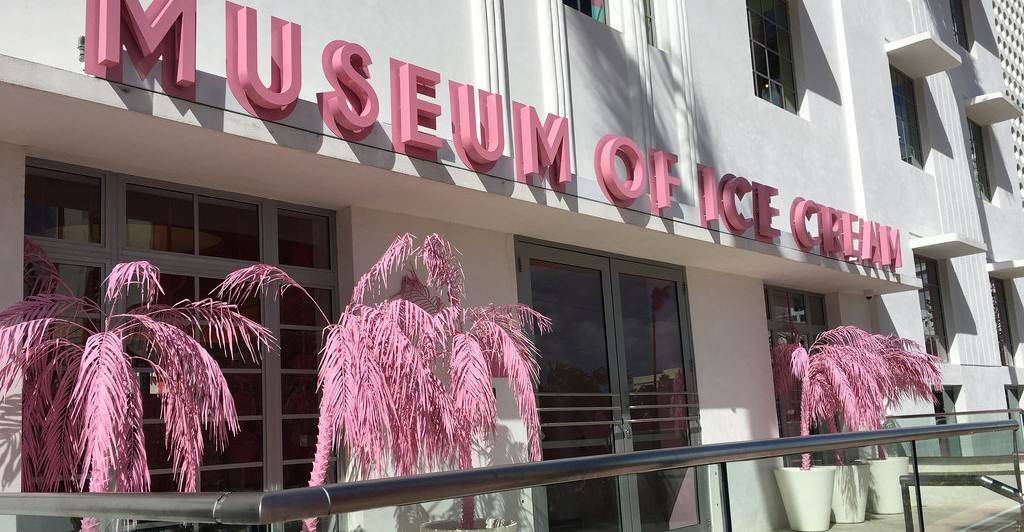
This Week’s Insights: The empty audience calories of Instagram museums… Arts institutions attempting to become community centers… The New York Public Library becomes an Instagram publisher?… Can theatre move the dial on public issues?… Online learning has changed the way students learn the piano.
- How To Get Sick On Instagram Museums: You know what Instagram museums are – those attractions designed to give the selfie-obsessed generation distinctive images to use as backdrops for their pictures. Somehow, the thought is that styling them as “museums” gives them legitimacy. But legitimacy isn’t just a word. The high admission prices, the crowds and the lack of meaningful content can make these empty-calorie experiences. Amanda Hess was fascinated by the genre and decided to visit as many of these attractions as she could. “As my summer of pop-ups dragged on, I began to dread my evenings. What began as a kicky story idea became a masochistic march through voids of meaning. I found myself sleepwalking through them, fantasizing about going to a real museum. Or watching television. Or being on Twitter. And yet, the ‘experience’ has emerged as among the defining fads of my generation.” And yet – it’s worth examining what is so attractive about these pop-up experiences. Why are people so drawn to them? What do they provide that people want?
- The Arts As Community Center: Many of our institutions are repositioning themselves in our culture, reinventing themselves to stay relevant. Libraries reinvented as community centers and are more popular than ever. So how about the arts? “In many ways a theatre can be compared to a community center—both are public places to gather, to socialize, to learn, to be entertained. Now some theatres are intentionally taking up the mantle, fashioning themselves into civic hubs where engagement programs are designed to connect onstage programming with audiences apart from their time in a darkened theatre, and to create initiatives to address specific needs in the community.”
- Speaking of Libraries And Relevance… The New York Public Library “will be releasing digitized versions of classic novels, novellas, and short stories on their Instagram account, @nypl, through the ‘Stories’ and ‘Highlights’ features. … The campaign started with Lewis Carroll’s Alice in Wonderland, which released with 200 pages distributed over the course of two days. Forthcoming titles include The Yellow Wallpaper by Charlotte Perkins Gilman and The Metamorphosis by Franz Kafka.” The library as publisher? The library as adapter of work? Surely making images of Alice’s 200 pages isn’t exactly user-friendly? Is this a stunt or an attempt to test a different format? Will Instagram followers see this as desirable content or the spam of an institution they’re not likely to visit? And will it draw any new readers?
- And Speaking Of Theatres And The Public Good… One theatre project has decided to use the form of theatre as a way to try to move the dial on public issues – in this case, the future of public lands in America. “In addition to mobilizing civic engagement at a grassroots level, the plays also act as an indelible record of the largest loss to public lands our country has ever seen. They document a community’s unique history and culture at a particularly urgent moment in that community’s journey. Because they are based on true stories, the plays are marked by an authenticity of character and voice, and a sometimes-disarming honesty. They are very real and very accessible, and have the rare power to touch people on a deeply personal level, galvanizing communities to take action.”
- The Online Teaching Revolution – A Better Way To Learn The Piano? The traditional way of learning is to work with a teacher who listens to you and corrects you and shows you how to improve. But increasingly students are getting access to teachers online, who demonstrate and show you how to do what they do. This isn’t exactly new. Oscar Peterson used to tell stories of playing out the grooves of the Art Tatum records he loved trying to learn the riffs. Artists have always used the work they encounter as templates for their own and as a way to build their own voices. But online lessons have changed the way many students learn the piano, especially jazz – and maybe made learning better and faster. Perhaps there is “something about the peculiar intimacy of the online lesson — the way it permits a student to scrutinize a teacher’s subtlest movements — that has transformed the learning process.” And it’s not just piano. At a minimum, the online teachers help educate and influence new generations of listeners.
Leave a Reply